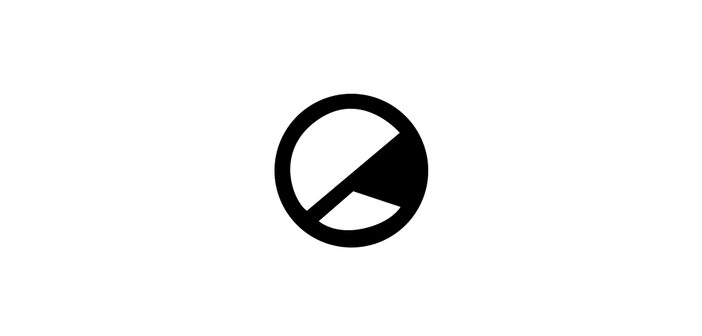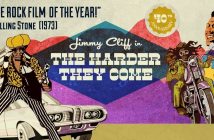Ridley Scott's sci-fi masterpiece will be regarded for many more decades to come as one of the finest films of it's genre to date. The Final Cut is the definitive version of this entrancing, enthralling and intoxicating world.
-
10
This review contains spoilers.
There’s no denying the power and influence that Ridley Scott’s seminal 1982 sci-fi classic Blade Runner has had over the genre and general pop culture since its release. An adaptation of Phillip.K. Dick’s Do Androids Dream of Electric Sheep? the initial critical response to the theatrical release was surprisingly mixed. Many called it convoluted, confusing, slow-paced and visually stunning but narratively stunted. Since then, subsequent versions have attempted to clean up and flesh out the film’s story to allow audiences to better grasp its meaning and the themes that it is grappling with. However, whilst some might argue against directors tampering and changing with the final product after its release, most come into agreement that the definitive vision that Scott intended can be found in The Final Cut, 25 years after the theatrical hit screens. Although since ’82, sci-fi fans and general audiences alike have come to see it as a classic of the genre and a game-changer for films in general, Blade Runner: The Final Cut offers the true version that the director had envisioned when he sculpted this masterpiece.
For those who are unaware of the plot, it follows Rick Deckard (Harrison Ford), a bounty hunter who’s tasked with hunting down four humanlike replicants and “retire” them after they’ve gone rogue and engaged on a mad, murderous attempt to meet their maker. The beauty of Blade Runner is that despite it’s high-concept plot, it manages to incorporate several vastly ranging genres into a mixing pot of gloriously stylish filmmaking. Although The Final Cut does away with the voiceover that can be typically found in genre, the film drips with this dark, noir-ish mood. The relentless rain beating down across the neon-lit skyline, the transitions between scenes, the manner by which Deckard tracks down these rogue replicants are more reminiscent of Chinatown or The Third Man than The Terminator or Star Wars.
Admittedly, the first time I watched Blade Runner, I wasn’t convinced that the genres would complement or marry in a way which satisfied fans of either would be satisfied. But as the film wore on (along with more than a couple subsequent viewings) you come to realise how masterfully Scott, Ford and screenwriters Hampton Fancher and David Webb Peoples intertwined them into a coherent and satisfying end product. The deeper Deckard delves into the worlds of humans and replicants and the tension it unfolds when he starts to question what it means to be truly human and whether or not replicants could ever evolve into beings with the same emotional capacity that humans are, the more intoxicating and alluring we find this dark, morally ambiguous world.
The initial complaints with the theatrical cut were that the story lacked any depth or satisfaction due to the film attempting to wrestle with so many different philosophical themes without locking down on any and truly unpacking them. But just as many have come to realise, the film isn’t as interested in its plot of A – B – C as it is interested in delving into the psyche of its characters. Harrison Ford’s Deckard is the centrepiece of the films larger questions and through his eyes, we go on a similar journey of confusion and discovery. Whether or not Deckard is a replicant is beside the point, it’s what Deckard chooses to believe that defines his character, not whether or not we as an audience know for sure. Originally this revelation was intended to remain ambiguous but as the studio neared its initial release, it hastily re-cut the ending to include a highly ill-advised romantic subplot and a clunky expositional voice-over. Since then Scott has come out and said that he believes Deckard may very well be a replicant but Ford has always disagreed. It is this ambiguity that makes Blade Runner so inherently re-watchable, aside from being aghast at its incredibly advanced visuals for its time and the fantastic performances, the layers that the film contains have been unpacked in the decades that have followed its release and still are to this day.
From a purely technical standpoint, none can argue that Scott had created an unparalleled cinematic visual masterclass. Right from its opening minutes of dialogue-less prologue, we are immersed in this endless sea of neon colours, with pillars of bright fire bursting into the sky as Vangelis’ incredible soundtrack awash over our senses. It is a full body experience as we enter this universe’s idea of Los Angeles 2019. From then on, we are thrust into a brutal, bleak and strangely beautiful world of colourful characters, fully realised, bustling streets, torrential rain, and a shit tonne of noir-inspired moodiness. For all his faults from a narrative standpoint over his career, not a soul could ever point the same questions at Scott’s visual prowess. Throughout his career, he has composed and created some simply astounding visuals on both an intimate and grand scale. There have been many films that have since borrowed or imitated the style that he pretty much created with Blade Runner, such as Spielberg’s A.I and Minority Report as well as Alex Proyas’ embarrassingly under-appreciated Dark City, but none have come close to what Scott was able to capture.
Blade Runner: The Final Cut (1982), directed By Ridley Scott, is available now on 4K Ultra HD Blu-ray, distributed by Warner Bros. Home Video, certificate 15.




